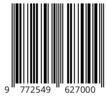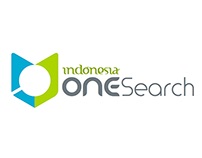Tasawuf Jawa: Kajian Filologis Terhadap Naskah Suluk Ahya Ngulumodin
Abstract
This research aims to describe the condition of Suluk Akya Ngulumodin manuscripts including: This research aims to describe the condition of the manuscript including: manuscript inventory, manuscript description and text study. The edited text uses a standard or critical edition accompanied by critical tools, and the translation of the text uses the following methods: literal, content, and free; Philological theory is used to reveal the cultural results contained in the manuscript. The object of this research is manuscript NB. 1768 of the National Library of Indonesia and BLK.0423-IS44 of the University of Indonesia Library. The results of this research are in the form of edits. Editing Suluk Akya Ngulumodin means preparing the manuscript ready to be published or printed. Editing in philology is the provision of a manuscript that is close to the original, which is a good and correct manuscript. Good means that it is easy to read and understand because it has been transcribed or transliterated (from Javanese script to Latin script) and the spelling has been adjusted to the target language. Correct means that it can be accounted for the validity of its text content, because it has been cleaned of writing errors through in-depth research.
Keywords
Full Text:
PDFReferences
Adenan, A., & Nasution, T. (2020). Wahdat Al-Wujud Dan Implikasinya Terhadap Insan kamil. Al-Hikmah: Jurnal Theosofi dan Peradaban Islam, 2(1). http://dx.doi.org/10.51900/alhikmah.v2i1.7609
Arifin, M. (2013). Sufi Nusantara. Ar-Ruzz Media.
Bakri, S. (2019). Dakwah, Sufisme Jawa dan Potret Keberagamaan di Era Milenial Berbasis Kearifan Lokal. , 5, 267. https://doi.org/10.21043/esoterik.v5i2.5936.
Baried, S.B. (1994). Pengantar Teori Filologi. BPPF UGM.
Beatty, A. (1999). Varieties of Javanese Religion: An Anthropological Account. Cambridge University Press.
Bratakesawa. (1980). Keterangan Candrasengkala. (Hadisoeprapto, Penerjemah). Kemendikbud.
Bruinessen, M. (1992). Naqsyabandi di Indonesia. Mizan.
Bruinessen, M. van. (1994). Tarekat Naqsyabandiyah di Indonesia: Survei Historis, Geografis, dan Sosiologis. Mizan.
Darusuprapta. (2002). Pedoman Penulisan Aksara Jawa. Yayasan Pustaka Nusatama.
Djamaris, E. (2002). Metode Penelitian Filologi. CV. Manasco
Drewes, G.W.J. (1969). The Admonitions of Seh Bari: A 16th Century Javanese Muslim Text. The Hague: Martinus Nijhoff.
Florida, N.K. (1995). Writing the Past, Inscribing the Future: History as Prophecy in Colonial Java. Duke University Press.
Geertz, C. (1960). The Religion of Java. Chicago. University of Chicago Press.
Hadiwijono, H. (1967). Man in the Present Javanese Mysticism. Baarn. Bosch & Keuning.
Hall, K. (2005). Traditions of Knowledge in Old Javanese Literature, c. 1000–1500. Journal of Southeast Asian Studies, 36, 1 - 27. https://doi.org/10.1017/S0022463405000019.
Hariwijaya, M. (2006). Islam Kejawen. Gelombang Pasang.
Headley, S.C. (2004). Durga's Mosque: Cosmology, Conversion and Community in Central Javanese Islam. ISEAS.
Hefner, R.W. (1985). Hindu Javanese: Tengger Tradition and Islam. Princeton University Press.
Howell, J.D. (2001). "Sufism and the Indonesian Islamic Revival." The Journal of Asian Studies, 60(3), 701-729. http://dx.doi.org/10.2307/2700107
Istanti, K. Z. (2013). Metode penelitian filologi dan penerapannya. Elmatera.
Khafidlin, K. (2021). Ancient Manuscript Preservation of Museum Ranggawarsita Library Collection Semarang Central Java. Daluang: Journal of Library and Information Science. https://doi.org/10.21580/DALUANG.V1I1.2021.8001.
Khairina, A., & Lestari, N. (2020). Environment on Javanese Literary Work: Exploring Cultural Convention and Harmony of Thinking. IOP Conference Series: Earth and Environmental Science, 469. https://doi.org/10.1088/1755-1315/469/1/012053.
Koentjaraningrat. (1985). Javanese Culture. Oxford University Press.
Kutha R, N. (2010). Metodologi Penelitian. Pustaka Pelajar.
Lombard, D. (2005). Nusa Jawa: Silang Budaya (3 Jilid). Gramedia Pustaka Utama.
Lubis, N. (2001). Naskah Teks dan Metode Penelitian Filologi. Yayasan Alo Indonesia.
Marrison, G. (2002). East Javanese palm-leaf manuscripts: Materials and palaeography of palm-leaf manuscripts from East Java, Madura, Bali, and Lombok. Indonesia and the Malay World, 30, 83 - 91. https://doi.org/10.1080/13639810220134683.
Massignon, L. (2002). Al-Hallaj Sang Sufi Syahid. (Dewi Candraningrum, Penerjemah). Fajar Pustaka Baru.
Maulani, M., Yulianti, S., Wasik, A., & Setiawan, C. (2024). Konsep Wahdat al-Wujud dan Wahdat al-Syuhud menurut Syekh Yusuf Al-Makasari. El-Afkar: Jurnal Pemikiran Keislaman Dan Tafsir Hadis, 11(2), 227-251. http://dx.doi.org/10.29300/jpkth.v11i2.4128
Meij, D. van der. (2017). Indonesian Manuscripts from the Islands of Java, Madura, Bali and Lombok. Brill.
Mulder, N. (2005). Mysticism in Java: Ideology in Indonesia. Kanisius.
Munawwir, A.W. (2007). Kamus al-Munawwir Indonesia-Arab Terlengkap. Pustaka Progresif.
Musonnif, A. (2017). Geneaologi Kalender Islam Jawa Menurut Ronggo Warsito: Sebuah Komentar Atas Sejarah Kalender Dalam Serat Widya Pradhana. Kontemplasi: Jurnal Ilmu-Ilmu Ushuluddin, 5(2), 329-355. https://doi.org/10.21274/kontem.2017.5.2.329-355
Nugraha, M. B. A., Zainaldy, & Sangidu, S. (2023). Naskah Tu?fah Al-Mursalah (MAA.021) Masjid Agung Surakarta; Konsep Posisi Salik Dalam Martabat Menuju Maqam ‘Ilahiyyah: Metahumaniora, 13 (1). https://doi.org/10.24198/metahumaniora.v13i1.45667
Nurlina, E.S. (2021). Kamus Bahasa Jawa-Indonesia. Tim Balai Bahasa.
Poerwadarminta. (2021). Bausastra Jawa. Penerbit Kanisius.
Pudjiastuti, T. (2023). Indonesian Manuscripts at Staatsbibliothek zu Berlin: A Codicological Review. KEMANUSIAAN The Asian Journal of Humanities. https://doi.org/10.21315/kajh2023.30.2.2.
Rahmawati, M., Rais, W., & Wibowo, P. (2022). Sêrat Bayanullah: A study of Raden Panji Natarata’s thoughts on Javanese Sufism through classical Javanese literature. HTS Teologiese Studies / Theological Studies. https://doi.org/10.4102/hts.v78i4.7239.
Ricklefs, M.C. (2006). Mystic Synthesis in Java: A History of Islamization from the Fourteenth to the Early Nineteenth Centuries. EastBridge.
Safi'i, M. (2022). Pemikiran Pangeran Dipanegara tentang Rukun Islam: Sebuah Tinjauan Filologi terhadap Naskah Hikayat Dipanegara. Thaqafiyyat: Jurnal Bahasa, Peradaban dan Informasi Islam, 21(1), 1-16. https://doi.org/10.14421/thaq.2022.21101
Safi'i, Muhammad. (2021). Pandangan Kesempurnaan Hidup dan Identitas Orang Jawa Menurut Ranggawarsita III dalam Serat Paramayoga, Nusantara Working Paper Series, (3). https://www.nusantarainstitute.com/pandangan-kesempurnaan-hidup-dan-identitas-orang-jawa-menurut-ranggawarsita-iii-dalam-serat-paramayoga/.
Saputra, K. H. (2008). Pengantar Filologi Jawa. Wedhatama Widya Sastra.
Saputra, K.H. (2001). Puisi Jawa Stuktur dan Estetika. Wedhatama Widya Sastra.
Simuh. (1988). Mistik Islam Kejawen Raden Ngabehi Ranggawarsita. UI Prees.
Simuh. (2016). Sufisme Jawa: Transformasi Tasawuf Islam ke Mistik Jawa. Narasi.
Simuh. (2016). Sufisme Jawa. Narasi.
Stange, P. (2009). Kejawen Modern: Hakikat dalam Penghayatan Sumarah. LKiS.
Sudardi, B., & Istadiyantha, I. (2024). Relationship of Javanese Language and History in Javanese Manucripts. International Journal of Research and Scientific Innovation. https://doi.org/10.51244/ijrsi.2024.1103042.
Suryani, E. (2012). Penerapan Filologi. Ghalia Indonesia.
Suseno, F. M. (1984). Etika Jawa. Gramedia.
Suyuthi. (2004). al-Hawi lil Fatawa. Darul Fikr.
Widyawati, R.W. (2009). Tafsir Sosiologis dan Filosofi Pujangga Jawa. Pura Pustaka.
Winter Sr., R. Ng. & Ranggawarsito. (2007). Kamus Kawi Jawa. Gadjah Mada University Press.
Woodward, M.R. (1989). Islam in Java: Normative Piety and Mysticism in the Sultanate of Yogyakarta. University of Arizona Press.
Worsley, P. (2013). Indonesia. Dharma P?tañjala: A ?aiva scripture from ancient Java studied in the light of related Old Javanese and Sanskrit texts. By Andrea Acri. Groningen: Egbert Forsten, 2011. Pp. 615. Appendices, Plates, Notes, Bibliography, General Index, Index of Text Passages.. Journal of Southeast Asian Studies, 44, 535 - 538. https://doi.org/10.1017/S0022463413000453.
Worsley, P. (2021). Some Thoughts About Genre in Old Javanese Literature. Jumantara: Jurnal Manuskrip Nusantara. https://doi.org/10.37014/jumantara.v12i2.1148.
Yasasusastra, J. S. (2012). Ranggawarsita Menjawab Takdir. Imperium.
Zachrun, K. I. (2013). Metode Penelitian Filologi dan Penerapannya. Elmatera.
Zainaldy, M. B.A.N, Sangidu, S. (2023). Naskah Tu?fah Al-Mursalah (Maa.021) Masjid Agung Surakarta; Konsep Posisi Salik Dalam Martabat Menuju Maqam ‘Ilahiyyah. Metahumaniora, (13), 1. https://doi.org/10.24198/metahumaniora.v13i1.45667
Zoetmulder, P.J. (1991). Manunggaling Kawula Gusti: Pantheisme dan Monisme dalam Sastra Suluk Jawa. Gramedia.
Zurbuchen, M. (2020). Introduction to Old Javanese language and literature : a Kawi prose anthology. https://doi.org/10.3998/MPUB.11902952.
DOI: https://doi.org/10.31002/transformatika.v9i2.9655
DOI (PDF): https://doi.org/10.31002/transformatika.v9i2.9655.g3584
Refbacks
- There are currently no refbacks.
Copyright (c) 2025 Muhammad Safi’i

This work is licensed under a Creative Commons Attribution-ShareAlike 4.0 International License.


_(2)_.png)
.png)
_.png)
.png)
.png)















